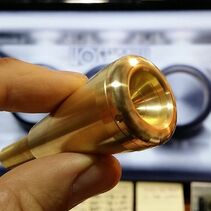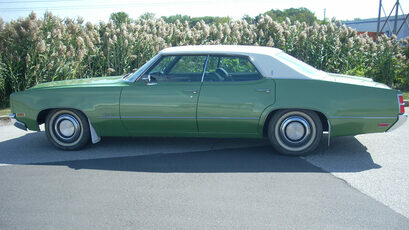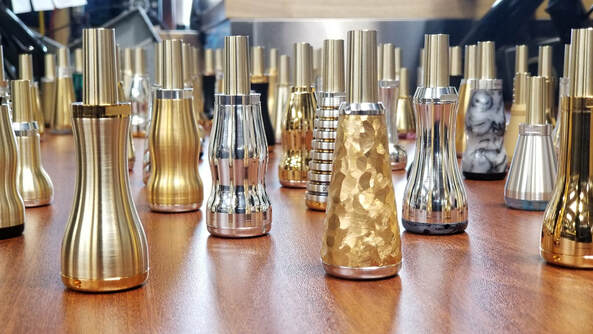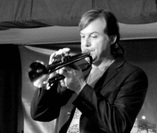 Having custom built mouthpieces for thousands of trumpet players, I have some insight I would like to share with you. Despite the great number of professors and self-proclaimed experts spouting that equipment cannot solve range and endurance challenges, my experiences working with players of all levels has proven that Rim shape and Cup depth are almost always contributing limiting factors. By adjusting these two components, I have witnessed amazing breakthrough moments by players almost daily for the past two decades. Is it possible that Rim shape and Cup depth changes could unlock your potential to play higher and longer? The answer is quite possibly yes, but often this depends on a full range of factors including your approach to producing tone and your willingness to break old habits.  Finding the correct Rim shape requires some experimenting with variations based on your personal history. I typically collect information on what has and has not worked for you in the past including the time periods in your life that major changes occurred. For instance, telling me that you regularly played above high C through your late teens and 20's before taking 20 years off the horn is very helpful. You may go back to your original "go to" mouthpiece only to find it feels limiting. The reality is that your body, dental structure, physical approach and mind set have changed since your last successful period of playing. Why do we expect everything to work with generic equipment in the first place? Seriously consider this question for a moment before reading any further. Would you expect your grade school shoes to fit you today? Take that concept a step further. Would you get on the highway and drive 75-85mph every day in the same car you drove when you were 18 years old? If you are 18 years old, would you drive that fast in traffic in this 1970 Buick? Common sense would tell most of us that what worked in the past should work again, today. Why fix something that isn't broken is what I've head from most educators and professors. It really bothers me that these words are spoken in the context of a private lesson where the student (you) is clearly stating that something is not working properly to produce your personal range and endurance goals. The arrogance of such a statement is 1) dismissive and 2) lacking in understanding of your personal situation. You are there, after all, to overcome challenges with the assistance of a paid professional. Yet this attitude is persistent in the western world of trumpet playing and teaching. So let's first admit that something is in fact "broken" and that we intend to diagnose the problem by exploring all contributing factors of tone production. Now let's list these contributing factors so we can get started.
1) Your specific approach to tone production (your technique in forming an embouchure and setting the air column into motion) 2) Your physical nature (state of your lips, tongue, dental structure, lungs, etc.) 3) The instrument determining the wave length variations and amplification (design, length, condition, etc.) 4) The physical design of interface between the player and instrument known as the mouthpiece 5) The environment in which the tone is being produced Once we break down the system into components, it become clear that every contributing factor is somehow related to another factor. Considering the environment, if we are playing underwater we will surely have trouble creating a tone due to the lack of air. A more realistic concern is playing in a very cold building with an organ that is low in pitch until the room warms up. While this is inconvenient, it is unlikely to be a major contributing factor to tone production, but I have encountered players who have difficulty getting their lips to vibrate against a cold mouthpiece. Now let's consider the instrument determining the character of the standing wave and amplification. You've probably heard that "insert name of famous trumpet player" can easily play a double high "insert note" on his/her "insert name of make and model" trumpet. And you've probably also heard something similar to, "Well that player could play that high on a garden hose". In reality, this is not entirely true. In fact, the success of anyone playing a specific range of notes on a trumpet or a garden hose is directly related to the design and integrity of the instrument. A garden hose 50' in length will play completely different than one that is 10' long. Likewise, a trumpet designed with a very small venturi, leadpipe and bell will play completely different than one designed .005" larger on the venturi, .020" larger on the leadpipe and with a faster tapered bell. In fact, it is quite possible that many players will find success on one of these variations while almost no success on the other when producing a specific type of tone color. Playing on the instrument that does not match the player's natural or preferred impedance can in fact reduce range, endurance and degrade motivation to play in general. For now, let's assume the environment is acceptable and the musical instrument in question is a perfect fit for the player. What can go wrong at this point? You could have a flawed approach to your physical performance technique, deficiencies in your physical nature or have mismatched mouthpiece design factors. Can we overcome our technique challenges? Yes, of course we can by educating ourselves on the factors involved and working on them thoughtfully over time. Can we change our physical nature? In most cases, the answer is no. We almost always have to work with what we're given with the exception of dental work and muscle development. And can we change the mouthpiece design? Yes. Of the three major factors that limit range and endurance, making changes within the design of the mouthpiece is the most straightforward approach to experiencing results quickly. In fact, the reason many players require many years to achieve measurable results in terms of range and endurance is directly related to the player building up embouchure and technique to overcome the mismatched design of a generic instrument interface (mouthpiece). By finding the best shape and size early on in the process, players can achieve results more quickly as they work towards strengthening their technique. In my next blog, I will discuss the advantages and pitfalls related to various mouthpiece Rim shapes and diameters. Cup depth and shape will be presented in a dedicated blog entry as well. Until then, please comment with your experiences and questions below. If you are ready to explore the advantages of a custom mouthpiece fit to your personal needs, give me a call at 303.657.2747 or email me at [email protected].
6 Comments
|
Jason Harrelson
Inventor, Musician, Educator and Founder of Harrelson Trumpets, Trumpet Momentum and Harrelson Momentum. Archives
July 2024
|


 RSS Feed
RSS Feed
